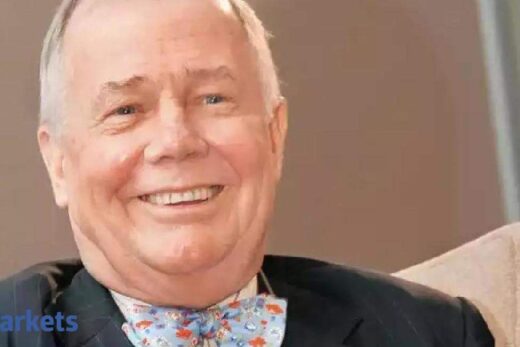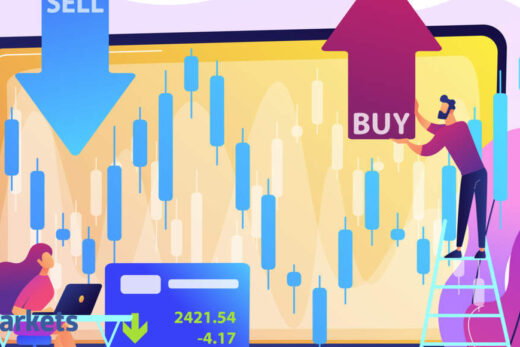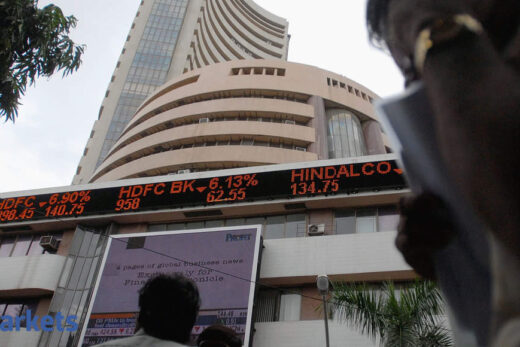What is your assessment of the second Covid wave in terms of economic impact? How different is it from the first wave?
The second wave has been very bad for the lives and livelihoods of people and also for the hospitality and tourism industry which was just beginning to hope that things would recover and then got this very serious setback. Having said that, one must remember that human beings are very resilient. On 29th June last year, we had a complete lockdown with 18,000 cases. Today, the weekly average is approximately 50,000 and there is far more activity.
During the first wave, there were almost 90,000 positive cases which have gone up to 400,000 in the second wave and the bounce back period has been shorter. If we compare that to any other downturn, the first time it hits you it is very strong, the second time, it is semi-strong and the third time as unfortunate and it becomes business as usual. We have seen this in the aftermath of a lot of terror attacks. The bounce back period becomes shorter.
What we are noticing at this point of time is the definite increase in the number of ways to meet and go out for lunches or dinners depending on which city you are in and people are taking precautions but the increase is exponential compared to the complete lockdown which the industry witnessed in Q1 last year. So the bounce back is strong and that is the first message.
The second is that for the first time, there is a convergence in the needs and wants of the industry as well as its customers. Both want to come back as strongly as possible.
Thirdly, a lot of empathy has got built around this sector and also a lot of understanding for the associates who have been working as frontline workers and doing their best to provide service to the nation independent of which brand they work for. So all these three factors coming together are creating a nice platform for the industry to recover. Of course, none of us knows what will be the the impact of the third wave if it comes, but definitely we are more prepared on all fronts to deal with it should that happen.
How far away are you from the normal occupancy level of the pre-Covid era?
Last year, the Q1 figures reported by us and other companies had fallen to zero revenues in certain parts of April and we started coming back in May and the quarter ended at like 15% of the previous year — 12% for some and 16% for others. I believe we can easily look at a 250% increase in the revenue which means it could be anywhere between 35% and 40% of the pre-Covid level in Q1 which was again very badly impacted by the second wave in April till the 20-25 of May.
We all know that a big hotel chain based out of Delhi has filed for bankruptcy. Do you see more of such big hotels and individual properties or companies which are managing these large and very marquee properties, could be in trouble?
It is not just because of the pandemic. Pandemics only accelerate change. Consolidations, M&A activity or this kind of acts that happened are beyond anybody’s reasonable control, even companies which are big brands and have been around for decades.
We have been around for 120 years. There must be certain things that they do, how they are capitalised, their ability to raise capital. The awareness of the brands, the trust in the brand are all very important. Taj stands for trust, awareness and joy and one of the first core value is trust. Some of these things are critical to weather the storm, no matter what kind of storm. It also helps the management to navigate by putting live strategies in place but definitely the impact on the entire hospitality industry has been very strong.
More important than the property coming up for sale or bankruptcies, are the lives and livelihoods. The tourism, airline and hospitality industries make a more than double digit contribution to GDP as well as to employment as an organised sector. If the unorganised sector is added to it, this is a very important catalyst for the GDP growth going forward not just in India but across the globe. There will be consolidation and M&As. But it has been happening without the pandemics and that will accelerate the change.
In your AGM, Chandra has highlighted that expansion is not going to stall and is rather going to accelerate — whether it is Ginger or the number of hotels which Indian Hotels is managing. Is it a good idea to expand when things are still so fluid?
Very good question but that takes us back to our business model. We are not using capital to expand. This is our asset light model which we have executed very successfully over the last three years. For example, we have added 70 new signed contracts for hotels to our business. We have added 40 homestays to our business. These are being done without using capital. With the exception of a couple of properties where we either own the land like our flagship Ginger which we are building at Santacruz where we have had the land, it is only the incremental employment of capital and we will also definitely look at access strategy.
Chandra as chairman of the group was absolutely right when he said that expansion should not stop because hotels are an asset class which belong to real estate sector and these assets are not built for a couple of years. Hotel investments in my opinion are the most important anti-cyclical investment. So you build when the market is down and not at the top of the market or at the top of the cycle. I definitely believe that expansion is good. Expansion on Ginger is very important because it is a very high margin business. It has a great potential on the Indian subcontinent because of the heterogeneous nature of India and we have been focussing very strongly in repositioning this brand for the last few years and we do see a lot of success.
Ginger had the highest signing among any brands on the Indian subcontinent. Ginger actually achieved more than 60% of the revenue of pre-Covid level. This is a kind of a science where one expands with the model based on management contracts or investments, depending on which brands you expand when you accelerate and when you put things on hold and the homestay business as well. People realised for example during this pandemic it is nice to have a second or third possible home if you can afford it where you can get to.
Our amã concept helps such owners manage their assets. A lot of parameters have to come together for positive EBITDA margin growth.
The stock is almost at a record high and the markets are assuming that Indian Hotels is in a sweet spot and that is largely because travelling for holidays abroad for the next 12-18 months would be tough and you will be a disproportionate beneficiary at least in your luxury hotels and also in your holiday hotels. Is the assumption right?
You are asking the wrong person the question. I can only say we are well positioned with our comprehensive brand management and the re-imagined brands since the last four years to take advantage of both international and domestic travel. On the domestic front, we have the largest portfolio of resorts and if leisure and domestic is again going to lead the bounce back in demand, then of course with almost 18 outlets in Goa itself with hotels and properties, resorts in Kerala, the Rajasthan palaces and in the north in the hills in Rishikesh, Simla etc, we are very well positioned.
With our newly launched property in Darjeeling, the Chia Kutir, we are very well positioned. We are in almost 100 locations in India which helps us to hedge against different states coming with different rules and regulations and opening and curfews and so it helps us to hedge because of so many locations that we have.
Our portfolio has 160 hotels in operation and another 60 in pipeline and we will be opening several interesting and important assets. On the international front, our teams are seeing a strong comeback in San Francisco, New York and things are beginning to open up in London. Dubai has been very resilient and in the last eight-nine months, it has done very well. Maldives has been another sweet spot.
So yes, a well hedged diversified portfolio with a choice of different kinds of offerings through our different brands enables us to be in a position to take advantage of the demand when it comes back whether it is led by domestic or by international travel.
Can Cummin move the aggregate picture for Taj?
Absolutely we need another year of this sustainable success because it is not just the contribution as a percentage to the top line. It is a business model based on incremental cost and incremental revenue and it is a very high margin business for us. The margins are north of 50% and our traditional hotel business model is looking at the EBITDA margin of 15% if you own it and 50% if you are actually in a small size business which we are not as that is not our core business model.
In Cummin, we own the P&L and all the properties and we are still able to drive those kind of high margins and the same is the story with ama and same is the story with re-imagine brand statement we have unleashing the potential of each of these brands as if contributor or a significant contributor to EBITDA and it is not the model based and you must have any new thing coming in at least 10% or 20% on the top line. We are fine if it has 5% to 10% of the top line but starts contributing 15% to 20% of the EBITDA amount produced.
What is the future of business hotels? Tata Sons Chairman N Chandra alluded to a hybrid business model. What happens to the business hotels as hybrid models are adopted as travel will certainly be less?
When travel comes back it will be for longer. Doing business online is fine because you are actually digging into the relationship capital you have built over the last three, five, seven or 10 years but for businesses to succeed over mid to long term, you also need to build that relationship capital for the future and that is why there will be movement. Another important thing has emerged. One with few key quick travel and long travel going from say India to California and coming back in three days. That is a trend that will take much longer to come if it ever came back. What will definitely happen is instead of going for three days, one might end up going for three weeks and visit all your customers and business partners.
The second is this whole notion of what we call pleasure combining business and leisure or bis occasion or whatever terminology anyone might use. This will become very popular. People are going to a leisure destination and doing their digital meetings out of there. Now the question is are you counting them as leisure tourists because they have taken the family with them or are you counting it as business or a combination of both? If we count them as a combination of both, this segment is emerging stronger than ever and that trend is here to stay. So on one hand, we lose a bit on short term, short haul quick turnaround business travel and at the same time, we are going to gain more on business travel combined with leisure.
If there is no large third wave and things start improving by end 2021 and if we meet again after a year in June end 2022, where do you see Indian Hotels moving both in terms of recovery and cash flows?
Let me try to answer that first on a lighter note and then on a serious note. Firstly there is a German saying which means put “your words in God’s ears” so that there is no third wave and we are all shielded from it and everything starts going back to normal. The second very important thing which you said is the fixed and variable cost structure. For an industry as old as ours, the industry had an opportunity to press the reset button on cost and almost everyone has done very well on the cost front.
We, as an example, cut corporate overhead by almost 40% without laying off even 1% in our head office. So, the cost side the industry has had a great opportunity and when the bounce back comes, even if it gets to 85-87% of the pre-Covid level revenue in June 2021, we should get the same level of EBITDA because of the reset on the cost side, definitely in the short term. As and when they come back, it will not follow the usual pattern of Q3 being strong and Q4 being very strong or Q2 being not so strong. What will happen is because of revenge travel or pent-up demand, we will see a disruptive demand pattern emerging which should help the industry to bounce back in a manner that is not in sync with all the graphs that we have seen pre-Covid for the last three-four decades on what happens on a quarter by quarter basis.
So yes your words in God’s ears and hopefully by June 2022, we are all happy and have forgotten the first and the second wave also and the third wave never comes.



